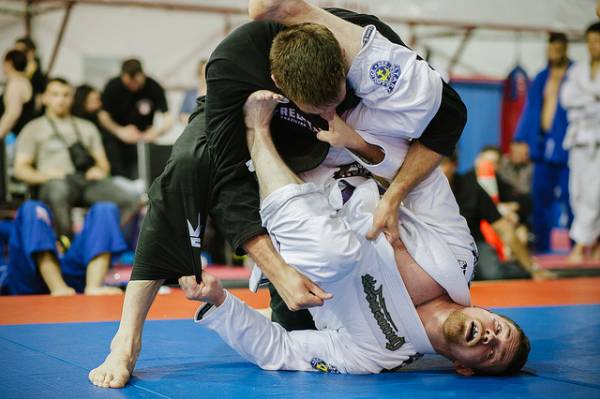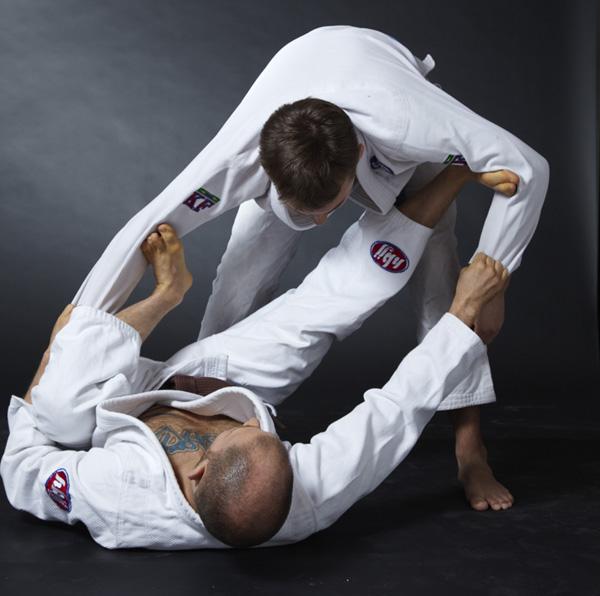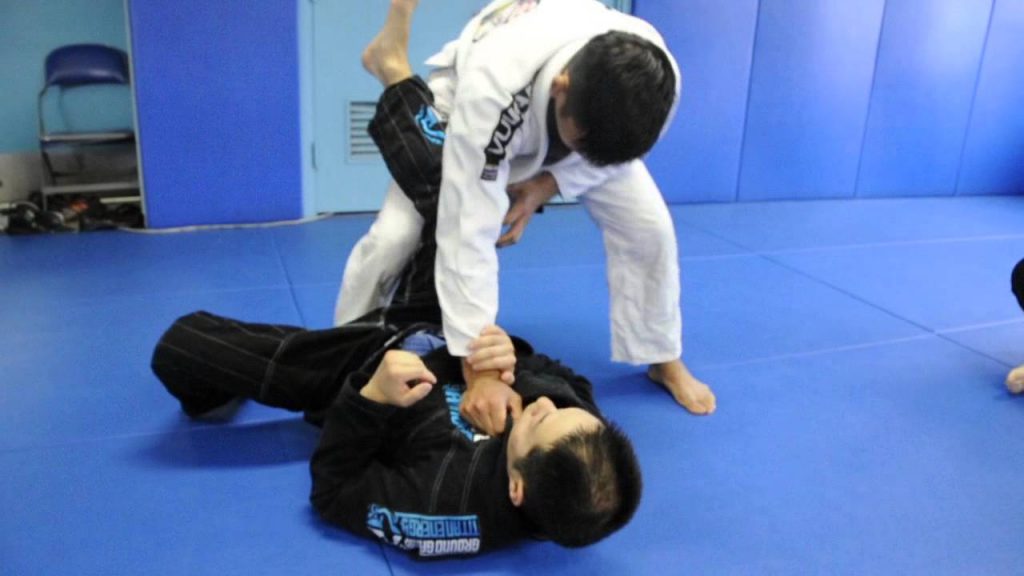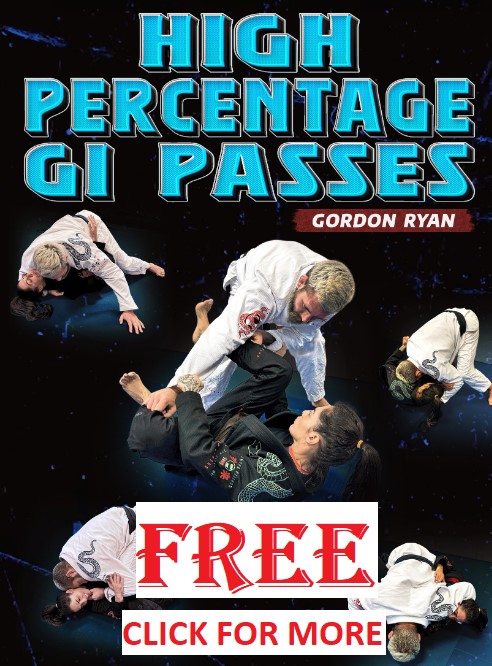
There’s a fundamental flaw in how we approach BJJ guard passing. So much so, in fact, that we even say it wrong from the beginning. My personal opinion is that this is the reason why so many people find guard passing really difficult to accomplish. Even those that love passing the guard sometimes struggle against opponents with unorthodox guard games. We even see it in the biggest world stages of grappling. Once again, in my humble personal opinion, there’s an easy way to fix it. It involves a conceptual approach to passing and progressive work through several stages. Learn that, and you’ll never struggle to pass anyone again.
The ultimate standoff in Brazilian Jiu-Jitsu most often happens when one person is playing guard, and the other one is trying to pass it. In terms of advantages and disadvantages, this is pretty much considered to be a 50/50 situation. However, any exchange that happens in this way actually favors the guard player much more than the passer. Yes, even the 50/50 guard actually has more going the way of the bottom player than the top. And the reason for this goes back to the roots of Brazilian Jiu-Jitsu, to begin with. Moreover, we have a widespread flaw in terminology when it comes to BJJ guard passing. It is time that we remedy this and addresses things as they are.
The Fundamental Idea Of Playing Guard
As BJJ emerged, it became famous for the ability of people to submit others while laying on the ground. The closed guard, at the time, was close to an unbeatable puzzle as you could get. Of course, this was in terms of BJJ vs any other martial arts. However, when it came to two grapplers going against each other, was the guard still the better weapon? The answer is yes since BJJ guard passing is actually something that is not conceivable. The closed guard was a double puzzle – how to break out of it, and then, subsequently, pass it. As people started figuring things out, a whole new generation of guards emerged.
The open guard game is something that people still play today. From basic open guards like the De la Riva guard to complicated lapel guards and inverted positions, the open guard is pretty much an area that has no limits. The sheer variety of different guards means that passing them becomes a much more difficult task. But, do you really need a different pass for every type of open guard out there, or is there a winning formula to defeat them all?
Let’s take a look at the guard itself. Actually let’s take a look at the basic idea behind playing a guard game. The guard, similar to standing martial arts is position zero. That makes it a position of safety. In BJJ it also means you have control over an opponent. And, as we all know if you have control, you can attack. Conversely starting from the top position against any guard that’s firmly in place, places you in a disadvantageous position. So, how can you pass a guard without falling prey to all the traps lying ahead?
The Wrong Approach To BJJ Guard Passing
The reason BJJ guard passing doesn’t work is that people attempt to go at it straight on. Do not get me wrong, this is not how we learn to pass the guard. However, once we get int the heat of a grappling match, it is ecxactly how we try to execute it. And much of that is due to poor understanding of the fundamental idea of passing. The first aspect is that there’s absolutely no way for the passer to face any guard position head-on. That’s a losing battle 100% of the time.

One thing I consider to be the culprit behind this approach is the terminology. We all say that we need to pass a guard. In essence, this is true. However, if you look at it much more carefully, we never actually pass a guard. In terms of the spider guard example, can you really pass it head-on? Or do you need to start breaking grips, de-attaching the legs and then passing? Now think of it this way – once you break grips and the structure of the guard are you still passing a guard?
BJJ Guard Passing – Understanding The Stages
The basic concept of BJJ guard passing that I’m about to layout is something that I’ve been using as of late. it took me almost a decade in BJJ to figure it out for myself. What I like to say whenever I need to teach guard passing is that it is impossible to pas a guard. The guard is a position designed to give the bottom player all the advantages. Instead, you need to think about passing the legs. However, there’s a gap between beginning in someone’s guard, and having the ability to get past the legs. In order to close that gap, you need to take specific actions, which are divided int there distinct stages of passing. However, for starters, you need to drop the phrase guard passing and start talking and thinking about passing the legs.
Stage 1: Neutralize The Danger
The first thing you need to address when you’re trying to deal with someone’s guard is the dangers of the guard itself. In order to do that, you need to know the basic idea behind that guard. In our spider guard example, it is the broken posture, dominant grips and distance management that are the real threats. So, you need to neutralize them. That starts by creating distance to make the legs inefficient, then freeing your biceps and ultimately, breaking the grips. However, unless you move to stage two, the guard player here is going to recover and start attacking again. So, the basic idea of naturalizing danger is to kill off any attacking avenues a guard offers to the bottom person. Only then can you start thinking about passing.
Stage 2: Break The Structure
Still, even after you neutralize the danger, it is far from safe to try and pass the legs. AS we said, we’re going to forget about BJJ guard passing and talk about passing the legs in Jiu-Jitsu. This is the way you want to think every time you’re on top. After you neutralize the danger it is time to take way the opponent’s ability to re-guard. In the spider guard example, that means getting both the opponent’s knees together to completely kill the guard off.
This is the moment where you go for dominant grips of your own, looking to get the knee and feet to one side or keep their hips elevated. Once you achieve this, there is no more guard. If you compare your starting position to the one you’re currently in you’ll see that the guard’s structure is completely out of the picture. Now you’re safe to start passing the legs.
Stage 3: Pass The Legs
Finally, we get to the passing portion. This is where what we consider as BJJ guard passing actually comes into play. However, if you remember, we naturalized the spider guard (as out example) and then broke it’s structure first. That means we’re now in prime position to pass. How does a pass work? Well, similarly to before you have stages. The ultimate goal is to get your hips past the opponent’s feet, knees and hips. This is integral to remember as even in a situation with no clear guard, an opponent can still recover through smart movement. So, you need to be methodical.


Final Words
A conceptual approach to things is going to get you much further into BJJ compared to a purely technical one. However, you’ll always be going to need techniques. In these terms, teaching people how to pass the guard has to involve showing the different passing techniques. However, we need to re-address BJJ guard passing in its most fundamental form and start talking about breaking guards and passing legs. It doesn’t matter if it is the closed guard, spider guard, Tronado guard or the worm guard. The principle is the same: neutralize, brak and pass the legs/. If you’re not trying to pass an opponent’s guard, but rather their legs, this approach will work every time.
Double Leg Takedown – How to Do It & The Most Common Mistakes


![Darce Choke Encyclopedia – Origins, Mechanics and Variations [2024] BJJ, choke, Brabo, BJJ Darce Choke, D'arce Choke, Darce BJJ Choke](https://bjj-world.com/wp-content/uploads/2017/11/JungPoirierLeeYahoo-218x150.jpg)









![I Got Your Back Jake Straus DVD Review [2025] I Got Your Back Jake Straus DVD Review](https://bjj-world.com/wp-content/uploads/2025/03/i-got-your-back-jake-straus-dvd-review-218x150.png)
![Shotgun Aoki Locks Mateusz Szczecinski DVD Review [2025] Shotgun Aoki Locks Mateusz Szczecinski DVD Review](https://bjj-world.com/wp-content/uploads/2025/03/shotgun-aoki-locks-mateusz-szczecinski-dvd-review-218x150.png)


![Upper Body Chain Attacks Janine Mocaiber DVD Review [2025] Upper Body Chain Attacks Janine Mocaiber DVD Review](https://bjj-world.com/wp-content/uploads/2025/03/upper-body-chain-attacks-janine-mocaiber-dvd-review-218x150.png)
![The Empty Half Guard Michael Currier DVD Review [2025] The Empty Half Guard Michael Currier DVD Review](https://bjj-world.com/wp-content/uploads/2025/03/empty-half-guard-michael-currier-dvd-review-218x150.png)
![Giancarlo Bodoni DVD Bundle Essential Connections Full Review [2024] Giancarlo Bodoni DVD Bundle Essential Connections Full Review](https://bjj-world.com/wp-content/uploads/2024/09/giancarlo-bodoni-dvd-bundle-essential-connections-324x235.png)
![Bricks Kesa Gatame System Jeremy Brick DVD Review [2025] Bricks Kesa Gatame System Jeremy Brick DVD Review](https://bjj-world.com/wp-content/uploads/2025/02/bricks-kesa-gatame-system-jeremy-brick-dvd-review-100x70.png)


![Reverse De La Riva System Mikey Musumeci DVD Review [2024] Reverse De La Riva System Mikey Musumeci DVD Review](https://bjj-world.com/wp-content/uploads/2024/11/reverse-de-la-riva-system-mikey-musumeci-dvd-review-100x70.png)

![Edging Yourself Out Of Danger Craig Jones DVD Review [2024] Edging Yourself Out Of Danger Craig Jones DVD Review](https://bjj-world.com/wp-content/uploads/2024/12/edging-yourself-out-of-danger-craig-jones-dvd-review-100x70.png)
![Roger Gracie Closed Guard System DVD Review [2025] Roger Gracie Closed Guard System DVD Review](https://bjj-world.com/wp-content/uploads/2025/01/roger-gracie-closed-guard-system-dvd-review-100x70.png)
![Double Sleeve Guard Jon Thomas BJJ DVD Review [2024] Double Sleeve Guard Jon Thomas BJJ DVD Review](https://bjj-world.com/wp-content/uploads/2024/10/double-sleeve-guard-jon-thomas-bjj-dvd-review-100x70.png)
![Full Guard Formula James Booth DVD Review [2025] Full Guard Formula James Booth DVD Review](https://bjj-world.com/wp-content/uploads/2025/02/full-guard-formula-james-booth-dvd-review-100x70.png)
![Heavy Top Game Fabiano Scherner BJJ DVD Review [2025] Heavy Top Game Fabiano Scherner BJJ DVD Review](https://bjj-world.com/wp-content/uploads/2025/01/heavy-top-game-fabiano-scherner-bjj-dvd-review-100x70.png)
![How To Knee Cut Junny Ocasio BJJ DVD Review [2025] How To Knee Cut Junny Ocasio BJJ DVD Review](https://bjj-world.com/wp-content/uploads/2025/02/how-to-knee-cut-junny-ocasio-bjj-dvd-review-100x70.png)
![Best Marcelo Garcia Techniques by Team Marcelo Garcia DVD Review [2025] Best Marcelo Garcia Techniques by Team Marcelo Garcia DVD Review](https://bjj-world.com/wp-content/uploads/2025/02/best-marcelo-garcia-techniques-dvd-review-100x70.png)

![Power Passing Body Locks Dan Manasoiu DVD Review [2025] Power Passing Body Locks Dan Manasoiu DVD Review](https://bjj-world.com/wp-content/uploads/2025/01/power-passing-body-locks-dan-manasoiu-dvd-review-100x70.png)


![Master The Move Anaconda Strangle John Danaher DVD Review [2025] Master The Move Anaconda Strangle John Danaher DVD Review](https://bjj-world.com/wp-content/uploads/2025/02/anaconda-strangle-john-danaher-dvd-review-100x70.png)





![Leg Locks From Beginner To Advanced Dan Manasoiu DVD Review [2024] Leg Locks From Beginner To Advanced Dan Manasoiu DVD Review](https://bjj-world.com/wp-content/uploads/2024/12/leg-locks-from-beginner-to-advanced-dan-manasoiu-dvd-review-100x70.png)
![Flow Pressure Kauan Barboza DVD Review [2025] Flow Pressure Kauan Barboza DVD Review](https://bjj-world.com/wp-content/uploads/2025/02/flow-pressure-kauan-barboza-dvd-review-100x70.png)

![Grappling Takedown Dominance Brandon Ruiz DVD Review [2025] Grappling Takedown Dominance Brandon Ruiz DVD Review](https://bjj-world.com/wp-content/uploads/2025/01/grappling-takedown-dominance-brandon-ruiz-dvd-review-100x70.png)